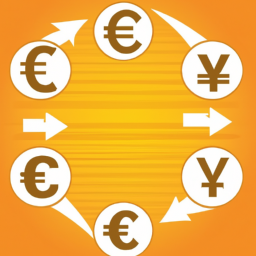
Understanding Currency Exchange Rates
What are Currency Exchange Rates?
Currency exchange rates refer to the value of one country’s currency in relation to another country’s currency. These rates determine how much of one currency you can exchange for another when you travel or engage in international trade. Exchange rates fluctuate constantly due to various factors such as economic conditions, political stability, and market speculation.
Factors Affecting Currency Exchange Rates
Several factors influence currency exchange rates, including:
Economic Factors
– Interest rates: Higher interest rates attract foreign investors, increasing demand for the currency and driving up its value.
– Inflation rates: Countries with lower inflation rates tend to have stronger currencies as they retain their purchasing power.
– Economic indicators: Factors like GDP growth, employment rates, and trade balances affect currency exchange rates.
Political Factors
– Political stability: Countries with stable governments and policies generally have more stable currencies.
– Government intervention: Governments can influence exchange rates through actions such as monetary policy or imposing capital controls.
Market Factors
– Speculation: Traders and investors may speculate on future currency movements, leading to short-term fluctuations.
– Supply and demand: The demand for a currency in the foreign exchange market affects its exchange rate. Factors like tourism, trade, and investment impact this demand.
Types of Exchange Rate Systems
There are various exchange rate systems used worldwide:
Fixed Exchange Rate
Under a fixed exchange rate system, a country’s currency is set at a fixed value against another currency or a basket of currencies. Central banks actively intervene to maintain the exchange rate within a narrow band. This system provides stability but limits flexibility and can be challenging to sustain in the long term.
Floating Exchange Rate
In a floating exchange rate system, currency values are determined by market forces of supply and demand. Central banks may intervene occasionally to stabilize extreme fluctuations, but the exchange rate is primarily market-driven. This system allows for greater flexibility but can lead to higher volatility.
Managed Float Exchange Rate
A managed float exchange rate system combines elements of both fixed and floating systems. The exchange rate is allowed to fluctuate within a specific range, but central banks intervene to influence its direction. This system aims to strike a balance between stability and flexibility.
How to Calculate Currency Exchange Rates
To calculate currency exchange rates, you typically use the exchange rate provided by banks or currency exchange services. The formula is straightforward:
Exchange Amount = Amount in Base Currency × Exchange Rate
For example, if you want to convert 100 US dollars to Euros and the exchange rate is 0.85, the calculation would be:
Exchange Amount = 100 USD × 0.85 = 85 Euros
Conclusion
Currency exchange rates play a crucial role in international trade, travel, and investment. Understanding the factors that influence exchange rates and the different exchange rate systems can help individuals and businesses make informed decisions. Whether you are planning a trip abroad or engaging in global commerce, keeping an eye on currency exchange rates is essential for maximizing value and minimizing risks.